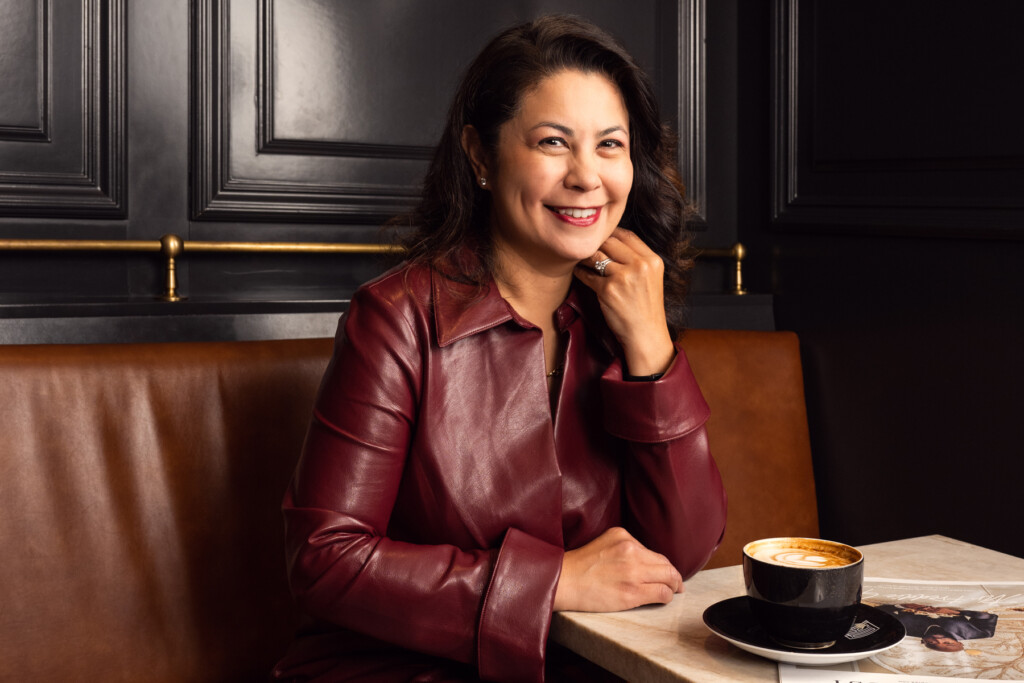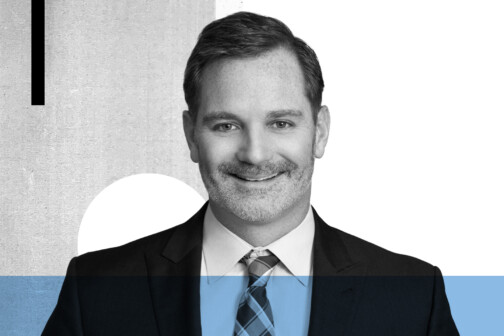Charmaine Tang’s love for finance was sparked by a simple question. She was working in JPMorgan Chase’s back office in New York as a teen when she asked her boss, “Where do all these trades come from?” He answered by taking her to see a Wall Street trading floor. It was a life-changing moment. “I knew in my gut, I wanted to be there,” Tang recalls. It was an ambitious goal, but the curious 16-year-old was determined to see it through.
Today, Tang is channeling her drive into leading the U.S. expansion of Switzerland-based asset management software tech company Orca AG. Its software helps high-net-worth individuals, family offices, trust firms, corporations, and more to track legal, compliance, and tax data. Founded in 2017, the company has rapidly gained traction across 20 countries and is garnering new business in the United States.
Tang, became president of Orca AG in October 2022, after nearly 25 years in investment and private banking. “I grew up in the traditional finance world, so being able to articulate the tech value proposition to a traditional finance leader or organization—I think that’s going to be the next version of me,” she says.
Tang has had immediate impact. In her first six months, she built Orca AG’s U.S. client base into its largest market. “For a long time, Switzerland has been, for obvious reasons, the leading country for Orca and the U.S. has been second or third. Now, we’ve really made a nice push here,” she says.
In between client meetings in Old Parkland, Tang often reflects on her journey. For that curious young girl growing up in Queens, New York, life wasn’t always easy. “I cry of joy, but I also hurt because of inequity,” she says.
Tang was born the oldest child to Filipino immigrants. When she was 5 years old, her father tragically passed away, leaving her mother to care for Tang and her infant brother. “She had a very modest job, and she worked hard,” Tang says of her mother, who worked as a phlebotomist at New York University Medical Center. Money was tight, but love and hard work abounded.
Tang showed early aptitude in science and math, earning a spot at Stuyvesant High School, one of the U.S.’s top public high schools. She was among the 300 students accepted that year out of 10,000 students who took the entrance exam. “I was a STEM gal before they called it STEM,” Tang says. Each day, she rode the subway two hours round-trip from Queens to Manhattan to school.
When she wanted to go to her prom at the Plaza Hotel, she reached out to her cousin, who was a JPMorgan Chase admin, for a part-time job. “I work for four or five hours after school, making $5 an hour, and my job was to open pneumatic tubes and pull-out bond trades,” Tang says.
Her supervisor showed her the trading room floor for the first time in 1990. “My jaw dropped,” Tang says. “It was on JPMorgan’s fixed income floor. There were people yelling, screaming—lots of men,” she remembers. The experience spurred her to earn a degree in finance and accounting at New York University’s Stern School of Business on a full-ride scholarship.
She moved into the controllers department at JPMorgan—a step closer to the trading room floor—and increased her former after-school side gig to a 25-hour weekly commitment. “Two managing directors from Long Island said, ‘Kid, you have to apply for the global markets internship program,’” Tang remembers. She had never heard of the internship, but the two leaders assured her they could help her get in.
When she learned more, she hesitated. “It’s all Ivy League, and it’s all men,” she expressed worriedly. The managing directors assured they’d take care of her. Tang was accepted into the program the summer of her junior year; the two execs wrote letters of recommendation, applauding her hustle. “I was the first NYU hire in the history of this JPMorgan program,” Tang says. She was also one of the few women in the group of interns selected. Her desk was on the fixed income trading floor, where she interned on the taxable credit research team. “I was like ‘Oh my god, I’ve made it,’” Tang recalls with a smile.
When she graduated, Morgan Stanley offered her a role as an investment banking analyst. “At that time, that was the white shoe firm,” Tang says. Roughly 140 young professionals globally were selected to the junior associate program Tang was hired into, about 40 were women and roughly five were women of color.
During her time there, she met Jan Kniffen, then senior vice president for The May Department Stores Co., who has become a lifelong mentor. Kniffen was spinning off Payless ShoeSource from its parent company, and Tang was the analyst on the deal. “Charmaine was hard not to like,” Kniffen says. “She’s very good at what she does. She’s driven. She’s focused, but she’s a very nice human being, and that’s a target combination.”
In her role, Tang worked on even more game-changing transactions during the ’90s dot-com boom, including Pixar’s IPO in 1995. “I met Steve Jobs and fetched him blanched and raw almonds in 1996, when no one knew what a raw almond was,” Tang chuckles. Her star-studded Wall Street experience over the next two years included run-ins with many high-powered founders and CEOs, and even director Steven Spielberg.
She shifted to a post as an equity research associate for the firm in 1998, at 25, and immediately began working on a team doing research and building models for media conglomerates Disney, Viacom, and Time Warner. “I was in the thick of the tech experience,” she recalls.
Tang loved digging into the figures behind transactions. “I think you have so much more bite when you can pick apart numbers,” she says. “I just thought that I would challenge myself intellectually at every stage; it was almost like I was training—just getting stronger.”
She went on to work for two more top teams at Citigroup, culminating in a role as a VP and retail analyst. “We covered the coolest stocks, like Nordstrom, [formerly public] Neiman Marcus, and Walmart,” Tang says. She often appeared on CNBC to share thoughts on the retail sector’s star stocks. “By the time I was 31 or 32, I was a regular contributor for retail stocks,” she says.
Although Tang had made a name for herself as a young leader in finance, the realities of the male-dominated industry still loomed large. When she became pregnant with her firstborn, a longtime mentor offered her some advice. “She said, ‘Charmaine, congratulations. I’m glad you’re pregnant, but don’t say anything until the bonus numbers are out,’” Tang recalls. She hid her pregnancy until she was seven months along. “You can’t get pushed over,” Tang says. “So, I always stood my ground, and each step of the way, I think I was able to gain respect, even at a young age.”
Tang’s son was born prematurely and had a handful of health complications during his first two years of life. So, by the time she had her daughter in 2008, she was ready to take time off to focus on being a mother. Her husband, George, sold his business in New York and became a stay-at-home dad while Charmaine finished her time working. After the 2008 recession, the couple decided to move to Dallas to go back to his roots—a community he loved. The transition back to George’s hometown proved enriching. “I became really entrenched as a mom, and I could fundraise, and I could make friends,” she says of the move to Preston Hollow.
“I would challenge myself intellectually at every stage; it was almost like I was training—just getting stronger.”
Two years later, she went back to work, becoming a franchisee and opening a location near Preston and Royal for New York-based Kidville, which offered children’s event and play spaces. “It was an upscale kids’ gym, so my clients included local celebrities and various sports personalities—people who lived in Preston Hollow and Highland Park,” Tang says. She ran the business with a partner, and the pair was inside the venue nearly seven days a week. “It was hard work,” she says.
In 2016, she closed the business and became the executive director for the Dallas division of March of Dimes. There, she oversaw its staff, fundraising, and volunteer efforts and partnered with the board. “I became more authentic in what I care about, such as equity, women, and girls,” Tang says. Her time in the nonprofit space evolved into a post as SVP of U.S. Trust’s philanthropic efforts in its West and Central regions, where she worked for two years before wanting to return to her banking roots.

In 2018, she leveraged connections she had had for more than 20 years at JPMorgan Chase to join Elaine Agather’s private banking team in Dallas as executive director. “I was re-entering the workforce as a mom; I was learning the private wealth side. I didn’t grow up on the private wealth side. I was an investment banker. So, this was all new to me, but I knew I was on the best teams,” Tang says. At the close of 2020, she took a new role with BNY Mellon as a senior client strategist, where she continued building connections in private banking and wealth management. “My client base was private foundations, family offices, business owners, and founders,” Tang says.
She met Tomas Hurcik, co-founder and CEO of Orca through a mutual connection in 2022. Tang wasn’t looking to make the move into tech, but when she saw Orca’s software capabilities—how it could address pain points for her client base by tracking assets across time and jurisdictions and store corresponding documentation securely on the blockchain—she was intrigued. “I’m a lover of innovation. As an adviser, I already saw tech coming down the pike. I could see how the financial services industry is getting commoditized, things are being automated, robo-advisers are coming, the whole bit—even at the mass affluent level,” she says.
When Hurcik returned to Dallas later in the year, Tang helped him make connections. “I believed in the product,” she says. “But I wanted to see how people I knew in Dallas and New York felt about it.” Hurcik came for a quick 72-hour trip, and Tang filled his calendar with meetings, introducing him to potential clients and key players in her network. “It was clear that she had a wonderful network of people who valued her as much as she valued them,” Hurcik says.
It was a turning point in the relationship. “It was a new experience for both of us. At the end of our three days together, it was clear that it was going to work really well,” Hurcik says. The two met up again during vacations in Long Island. There, the power pair formalized their desire to work together. She has since campaigned around the U.S., significantly growing the company’s market to include clients such as investment management firm Mt. Vernon Investments in Dallas.
“It’s her versatility that is unique, and that’s also been her story, right?” Hurcik says of his top U.S. exec. “She has worked in investment banking in New York, she’s worked in private banking in Texas, and she has now made the move to technology.”
Orca is exploring opportunities for growth in the U.S., including strategic partnerships and building out a team under Tang. “It could be sales, a lot of it will be marketing, and the last thing is APIs (application programming interface),” Hurcik says, referring to software intermediaries that allows tech platforms to communicate with each other. Specifically, the company is in the final stages of launching an integration with Addepar, a wealth management platform with more than $3.5 trillion in assets and a large stateside client base. Hurcik hopes this will be the first of many such integrations in the United States.
For Tang, the transition has been seamless, and she looks forward to writing the latest chapter in her career. “Working inside a tech company is very different than working inside a bank. The nature of the work is fast; it’s exciting to see how we can take feedback from the field or when we’re talking to clients and prospects, meet as a team, and quickly iterate on that to make the tech sharper—every single day. That’s super exciting to me,” she says. “All of that early part of my career, I just was trying to crack in and get in there. And now I’m here.”
Author








